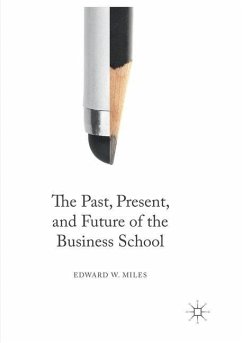This book examines the criticism that modern business schools face and how these obstacles have evolved throughout history. Through historical, resource, and professional school contexts, it sheds light on the operating environment of the business school and the challenges endemic to various university-based professional schools, exploring the likelihood that potential interventions will result in success or failure.
Business schools are often accused of inhibiting the practice of business by producing research that is irrelevant and does not address real concerns facing managers. This book investigates these accusations by outlining the historical values on which academic institutions are based, the resources and funding available today, and comparisons to other professional schools which undergo a similar level of scrutiny. This extensive coverage will help academics, administrators, faculty, and policy makers with the tools to understand better the ill-will towards businessschools in today's university structure, and ultimately to deliver on the benefits they provide to stakeholders.
Business schools are often accused of inhibiting the practice of business by producing research that is irrelevant and does not address real concerns facing managers. This book investigates these accusations by outlining the historical values on which academic institutions are based, the resources and funding available today, and comparisons to other professional schools which undergo a similar level of scrutiny. This extensive coverage will help academics, administrators, faculty, and policy makers with the tools to understand better the ill-will towards businessschools in today's university structure, and ultimately to deliver on the benefits they provide to stakeholders.








